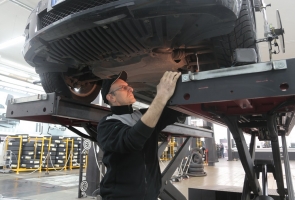I can’t tell you how many times I’ve visited e-comm sites, tapped the blog link, and found nothing but a blank page or “content coming soon” kind of message. Even today, far too few businesses recognize the value of blogging as part of their e-commerce marketing strategy.
I’m not saying that you need a blog post for every product, but knowing how to set up a blog in a way that generates conversions can give you a real edge. This is especially if you’re just one of a dozen e-comms selling the same products or the same types of products. People browsing an online store already know they need something. The real question is: Why buy it from your store?
What are you doing to up the perceived value of your products or the overall service your e-comm provides? Before you start dropping prices, pushing coupon codes, or changing your featured product page for the fifth time this month, read this post and read it to the end. I’m about to give you some valuable strategies that will make your store stand out simply by keeping a consistently updated, well-organized blog. Let’s just get right into it …
Pain Points Vs. Features and Benefits
Jabbing pain points is one of the oldest and truest of marketing strategies. Every product that ever was or ever will be exists to solve a problem. People searching for auto parts clearly have a problem that needs to be resolved.
Your product descriptions should be able to take care of any and all features and benefits marketing. A bullet list of features that matter to the person searching your product listings should be all you need.
However, keep in mind that there are several points on the buyer’s journey at which people will see your product descriptions. If your SEO game is strong, your future customers may find what they’re looking for with a simple Google search. If you’re still building your rankings, your blog can be the thing that gets them to take that all-important first look.
This is why your auto parts blog needs to establish both the understanding of the customer’s needs and the appropriate action to take to solve their problem. Your blog posts should address the problems caused by not replacing bad parts or the ones that can be solved by using specific parts to get specific results.
Just for the sake of example, let’s assume someone is looking to buy brake pads. The pain points here are obvious: Worn brake pads are dangerous and can lead to accidents, injuries, or worse if left to deteriorate further. Not replacing brake pads can damage rotors and other parts of the braking system. Use what you know about the function of brake pads to create a sense of urgency. Once you’ve established the problems that exist or arise from faulty brake pads, you can link to that section of your store and let the reader compare specs.
OEM Vs. Aftermarket
Unless you’re running a dealer e-comm, chances are you are offering a large percentage of aftermarket parts. Dealerships go out of their way to scare people into spending more on OEM products, and those products often come with insane markups and service fees. There might not be any real difference between a $30 OEM air filter and the $10 aftermarket equivalent on your site, but the perceived value is a powerful thing.
For many, a higher price tag equates to a higher value. Your job is to show the buyer that your product is just as effective, will not create more problems, and will save them a lot of money, 66 percent in this example. Incorporating this information into your blog sets the mind of the buyer at ease, as does embedding a short how-to video that explains how simple it is to do the repair.
If you already have videos produced that show how to swap out an air filter or change a headlight bulb, belt, or hose, use them. You’ll be creating backlinks to your video content that could also increase your rankings on sites like YouTube and Vimeo when you embed work you’ve already invested the time to produce into your e-commerce blog writing strategy.
Technical Vs. Narrative
An effective way to communicate pain points and their solutions is through storytelling. If you haven’t tried this approach in your blog as of yet, now would be a good time to consider it, especially if your blog is aimed at consumers. B2B blogs should steer clear of this approach and stick to a fact-based presentation of these concepts.
You can tell stories from your own perspective or from that of the buyer. The former builds confidence in your brand. The latter can help build confidence in the individual’s ability to complete simple repairs independently.
Another benefit of this kind of blogging is that it meshes well with story-based email sequences. Tease the pain points in the email and provide the solutions in your blog posts. If you present the messaging in your email in a compelling way, people will click through in greater numbers.
Do Tutorials Work in a Blog?
In a word, no. People are not likely to sit and read an article on how to do a repair. Most will turn directly to sources like YouTube where they can get the visual element when trying to learn how to do something.
However, you can use your blog to promote your videos, as I mentioned earlier. Embedding videos at strategic points in your blog post can have a powerful effect. Make good use of section titles, and keep the section titles and videos close together. Most people will only read the section title and click through to get the visuals.
When linking to tutorial content, either through email or social media, always link to your blog. This helps build good off-page SEO and can boost rankings for your videos. If you link directly to your videos, you’re missing out on all the clicks that could be helping your e-comm site advance in the rankings. Always play the SEO game as thoroughly as possible.
Final Takeaway
A number of approaches to automotive e-commerce blogging can be effective. Having a blog is a big one. Organizing it right and presenting the content in a marketable way is another.
Need help getting things started or getting better results? We’re here to help. You’re at the end of the post. It’s a great time to contact us at BeezContent and discuss an effective blog development strategy. We’re here to help, and we work with a talented team of writers that can help boost the effectiveness of your blog.




